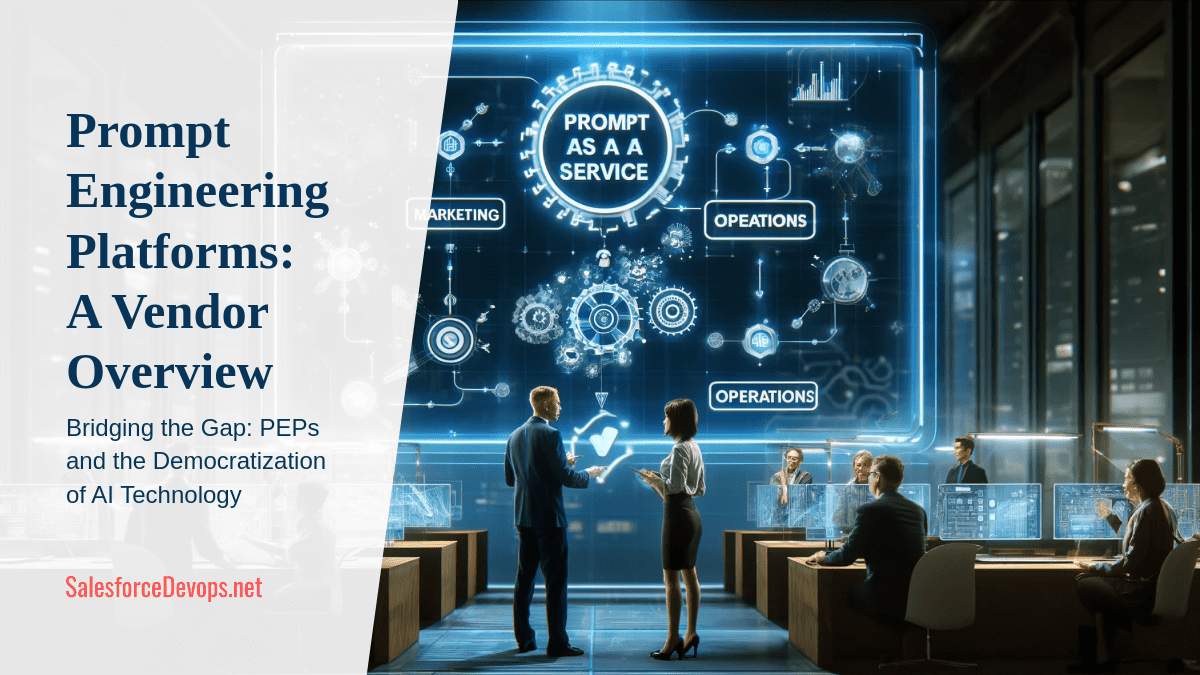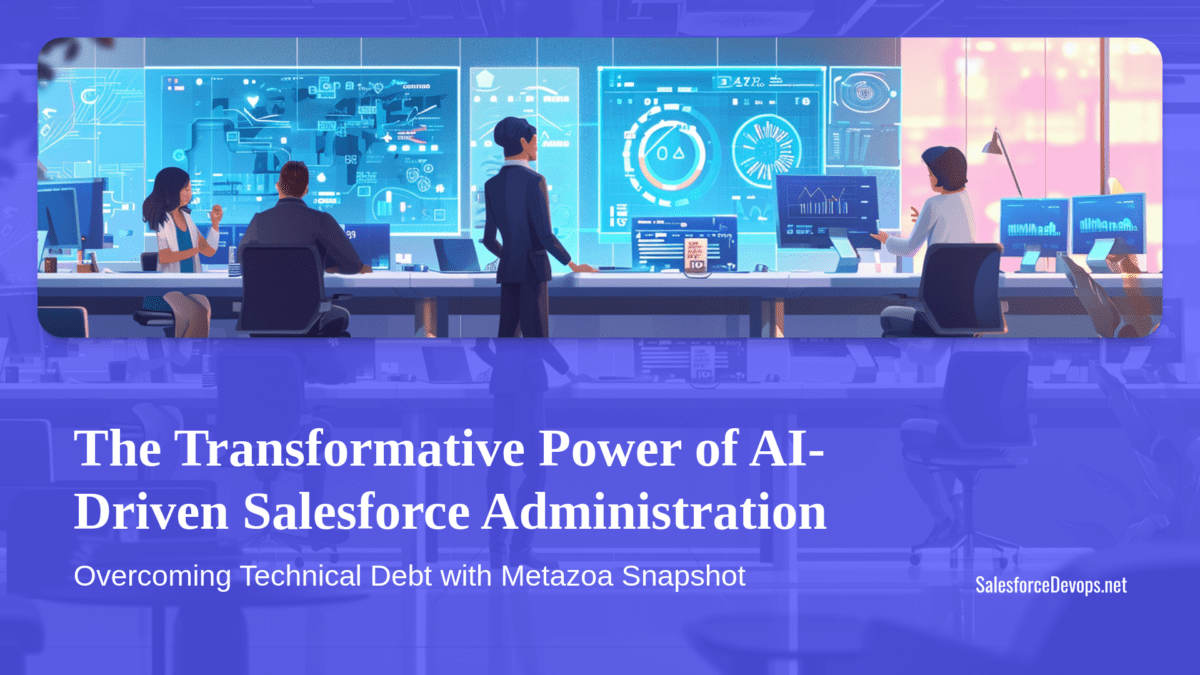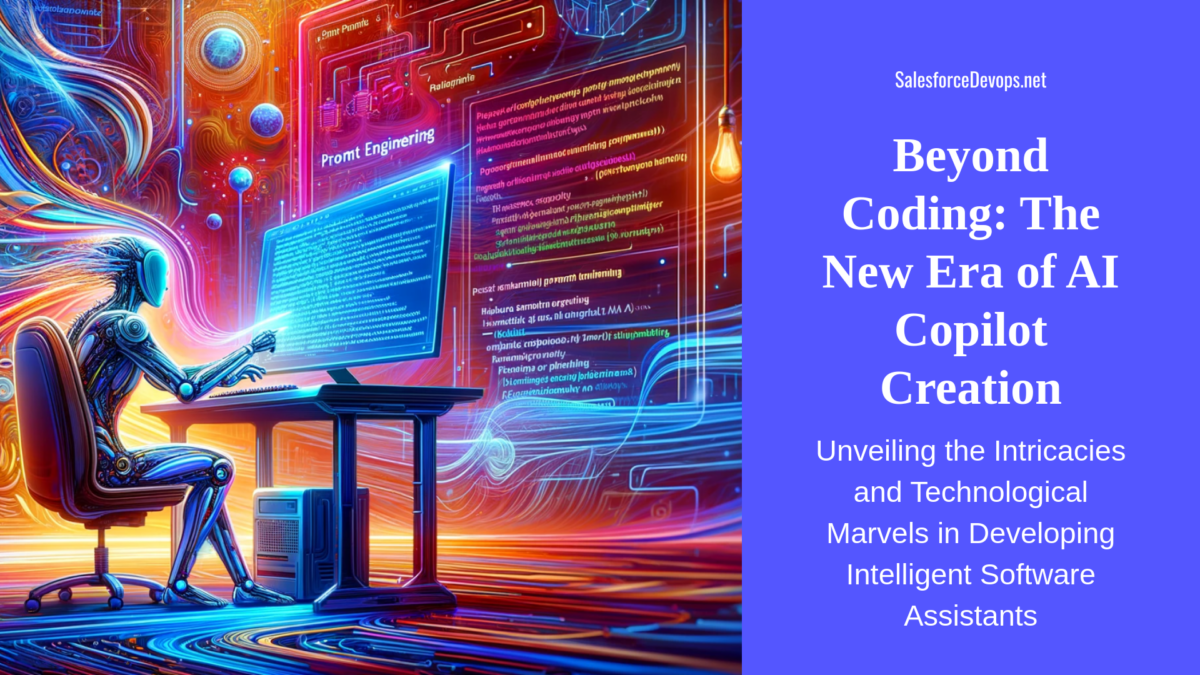Prompt Engineering Platforms: A Vendor Overview
Prompt Engineering Platforms (PEPs) are revolutionizing how businesses tap into the power of large language models (LLMs). Once the domain of skilled AI developers, prompt engineering – the art of crafting the instructions that guide LLMs – is increasingly accessible to a wider audience. PEPs provide the essential bridge between the raw potential of AI and its real-world impact on operations.
Businesses are turning to PEPs for several important reasons. First, they promise efficiency gains. PEPs streamline AI workflows, making task automation and intelligent insights less labor-intensive. Second, PEPs support scaling operations. Using pre-built prompts and templates lets businesses quickly extend AI benefits across departments. Finally, the low-code trend empowers subject matter experts. PEPs allow them to directly experiment and shape AI output to fit their specific needs.
This vendor overview aims to characterize the current PEP offerings from the leaders in cloud computing and enterprise software. In this analysis we will examine core capabilities, analyze key players, and offer guidance for organizations seeking the right PEP solution to match their unique needs.
Table of contents
What is a Prompt Engineering Platform?
The Prompt Engineering Platform (PEP) is a conceptual framework designed to streamline AI development by managing prompts as code. Much like how source code is the foundation of traditional software, well-crafted and managed prompts are the key to unlocking the power of large language models (LLMs).
While no single vendor offering might perfectly embody every aspect, PEP provides a benchmark for evaluating and comparing the strengths and weaknesses of various PEPs in the market. By outlining this idealized vision, my aim is to normalize the conversation around PEPs and establish a foundation for clear analysis of the real-world offerings currently available.
Why is Prompt Engineering Important?
In a year and a half since ChatGPT’s public splash, the spotlight on prompt engineering might seem to have dimmed. Services like OpenAI’s DALL-E and user-friendly chatbot interfaces streamline AI interactions, requiring minimal prompt crafting expertise. This raises the question of whether widespread prompt engineering knowledge is still essential.
However, for IT professionals and domain experts seeking to build custom AI tools, prompt engineering is more crucial than ever. While casual users might converse with AI naturally, those developing AI-powered solutions need precise control over outputs. Meticulously crafted prompts are the key to ensuring that LLMs align with specific business needs and technical constraints. A well-designed Prompt Engineering Platform (PEP) can empower these skilled individuals, amplifying their impact through effective prompt creation, testing, and deployment.
Core Capabilities of PEPs
Prompt Engineering Platforms provide tools to create, organize, test, and deploy prompts. Like traditional software development, PEPs also facilitate version control, collaboration, and integration of prompts into operational workflows. By treating prompts with the same rigor as code, PEPs accelerate AI adoption and enhance the reliability and maintainability of AI-powered solutions. Let’s dissect the core capabilities that organizations should consider when evaluating PEP solutions:
Prompt Creation and Management
PEPs streamline the process of designing prompts. They offer intuitive tools for prompt crafting, reducing the reliance on extensive coding. Templating features allow saving and modifying parameterized prompts for consistency and rapid deployment. Versioning and granular access controls are essential for collaboration and governance, particularly within large enterprises.
Integration Capabilities
Robust PEPs seamlessly integrate with an organization’s existing technology stack. Secure data connectors link to internal data sources (CRM, ERP, databases), ensuring that prompts can leverage real-time business data for highly contextualized AI responses. Some PEPs support accessing external data feeds, further enriching AI output. Deep workflow integration is key for efficiency – PEPs can embed prompts directly within applications or trigger their execution based on specific events.
LLM Gateway and Model Garden
Leading PEPs offer a gateway to various LLMs (Anthropic, OpenAI, etc.), allowing users to select the most appropriate production model for a given task. Guidance on model selection aids in making informed decisions based on performance benchmarks or cost. Flexibility-minded PEPs offer internal developers a Model Garden which supports importing open-source or fine-tuned models for specialized use cases and enhanced control.
Deployment & Operationalization
Prompt Engineering Platforms transform prompts into usable assets by exposing them as callable APIs, ensuring integration with software applications. Tools for designing complex AI workflows involving prompt execution, decision points, and integration with other systems enable sophisticated automation. For large-scale use cases such as report generation or vast dataset analysis, batch processing support is frequently required.
Prompt SDLC (Software Development Life Cycle)
A fully realized PEP will support a structured approach to prompt development. Frameworks for testing and validating prompt variations against data samples are key. Monitoring capabilities, such as metrics and dashboards, provide insight into prompt performance over time, surfacing potential biases or drifts. Easy mechanisms for iterative prompt refinement based on performance insights ensure continuous improvement in AI outputs.
Emily Glassberg Sands on Stripe’s LLM Explorer
On a recent No Priors Podcast hosted by Sarah Gou of Conviction Capital, Elad Gil, had Emily Glassberg Sands, Head of Information at payments company Stripe, as a guest. Sands described how Stripe has deployed a PEP-like project internally.
The Genesis of the LLM Explorer
Sand’s vision for democratizing AI started small. Initially, her team at Stripe was simply fascinated by the capabilities of large language models. To explore their potential, they built the LLM Explorer. This in-house tool allowed anyone at Stripe to safely experiment with LLMs, feeding them prompts and observing the results.
This sandbox became a breeding ground for innovation. Team members from various departments discovered unexpected ways to apply LLMs, not just for code generation, but for tasks ranging from summarizing complex documents to generating creative marketing copy.
Data: The Key to Relevance
Early experiments, while promising, often produced generic or irrelevant outputs. Emily’s team realized that grounding the LLM in Stripe’s vast trove of internal data was crucial. They focused on building secure, real-time pipelines that could seamlessly inject company-specific knowledge into prompts. AI outputs eventually became tailored to Stripe’s unique language patterns, business processes, and customer interactions.
The Birth of the “Corporate Voice Checker”
Then they had an aha moment: Could an LLM help ensure consistent brand voice across marketing materials? Using the LLM Explorer, they crafted a series of prompts designed to analyze a piece of text, scoring it on how well it aligned with Stripe’s established tone and messaging. The results were remarkably accurate. With iterative refinements and collaboration from the marketing team, the “Corporate Voice Checker” was born.
Prompt as a Service: A Natural Transition
The success of the “Corporate Voice Checker” sparked a realization. By encapsulating its logic and data access into a callable API, they could transform it into a true “Prompt as a Service.” Now, any Stripe internal IT application could tap into this AI-powered capability on demand. Emily’s team developed best practices to version, test, and deploy prompts, borrowing inspiration from software development lifecycles.
Vendor Landscape
The PEP market is rapidly evolving, with both established tech giants, open-source projects, and innovative startups contributing. In this analysis we choose to focus on a select group of prominent global vendors.
Salesforce Einstein 1 Platform
Salesforce leads the pack in integrating PEP-like concepts into their core platform. Here’s a breakdown of their key strengths and the components that enable their AI advantage.
Low-Code Emphasis
Einstein Studio’s Prompt Builder empowers business users and admins to directly shape LLM behavior. Its intuitive interfaces and prompt templates streamline AI development and accelerates adoption across the organization.
Salesforce Data: The Heart of AI
The most powerful aspect of Salesforce’s approach is its tight integration with its established metadata architecture. Prompts can seamlessly leverage rich, secure, real-time CRM data, ensuring LLM outputs are highly relevant and actionable.
Salesforce-defined field and record-level security permissions are enforced. This means AI actions and prompt-driven insights automatically adhere to existing governance models, simplifying compliance in regulated sectors.
The Einstein Trust Layer: Branded AI Security
Salesforce’s Einstein Trust Layer is a security architecture designed to facilitate the safe and responsible use of generative AI within the Salesforce environment. It employs multifaceted safeguards to protect sensitive company and customer data.
Key features include a strict zero-data retention policy with third-party LLMs, dynamic grounding with secure data retrieval that respects Salesforce permissions, prompt defense mechanisms to mitigate harmful outputs, data masking for sensitive information, toxicity scoring, and a comprehensive audit trail. It prioritizes transparency, enabling users to monitor and analyze AI interactions within their Salesforce ecosystem.
Microsoft Azure/Dynamics 365
Microsoft emphasizes integrating AI throughout their existing product suite. Here’s what sets them apart:
Familiar Interfaces
Copilot features bring AI assistance directly within tools like Outlook, Teams, and Dynamics 365. The low-code Power Platform allows for prompt-based workflows to be written by Power Platform experts. This approach focuses on ease of use for those deeply embedded in the Microsoft ecosystem.
Potential for Growth
The full potential of Copilot as a PEP-like solution depends on its future evolution. Enhanced prompt customization and deeper integration with Dynamics 365 data structures are key areas to watch. However, Dynamics 365 has yet to integrate user-written prompt templates into its architecture.
Google Cloud Vertex AI
Google just refreshed their AI Engineering tools last week at Google Cloud Next. Besides announcing a million-token context window in Gemini Pro, Google demonstrated new Vertex AI tools and workflows that support a simplified, developer-focused workflow.
New: Google AI Studio
Google Cloud customers can now access Google AI Studio, which is a tool for prompt development with some PEP properties. It provides simplified access to Gemini Pro, Google’s new million-token-context-window model. Google AI Studio also includes a simplified interface for creating fine-tuned models based on Gemini Pro.
LLM Choice & Experimentation
Vertex AI provides access to various LLMs (including open-source options) and tools for managing model selection and the wider AI development lifecycle. Google keeps an up to date Model Garden with the latest LLM offerings, except for OpenAI.
Google’s new Vertex AI Prompt IDE, which is like Google AI Studio, focuses on prompt performance, A-B testing, and other AI engineering innovations. All demonstrations focused on using unstructured data from Google Workspace or other simple API integrations.
Demanding Expertise
Google’s platform is powerful with simplified developer experience. But it might require more technical expertise to achieve the same level of tight, out-of-the-box integration found in Salesforce’s solution. Also, the issue of security guardrails around enterprise data integration was not addressed.
Amazon Web Services
The breadth of tool offerings from AWS makes it hard to see AWS as a PEP platform for individual users. AWS has organized most of its Generative AI and Machine Learning tools under SageMaker and Bedrock. This services their existing large model-building customer base. This makes their solutions more in tune with experienced data pipeline developers. Salesforce and AWS have announced tight integrations between Einstein Studio Model Builder and Bedrock, for example.
Prompt Engineering Platform Challenges
While PEPs offer significant advantages to businesses looking to harness the power of LLMs, it is a new technology and there are potential pitfalls for IT leaders to understand. Grasping these challenges is crucial for companies to prepare adequately and make informed decisions.
- Data Privacy and Security:
- Protecting sensitive data from unauthorized access or leaks
- Complying with data protection regulations.
- Increased complexity with external data integration.
- Integration Complexity:
- Challenges with legacy systems or diverse software environments.
- Seamless data flow setup may require significant IT resources.
- Skill Gap and Training Needs:
- Prompt engineering requires specialized understanding.
- Investment in staff training can be time-consuming and costly.
- Scalability Concerns:
- Performance bottlenecks may emerge with complex workflows and increased prompt volume.
- Maintaining efficiency as AI demands grow can be challenging.
- Cost Implications:
- Significant initial setup, operation, and maintenance costs.
- Indirect costs include training, integration, and potential deployment disruptions.
The Future of PEPs and the Democratization of AI
Prompt Engineering Platforms hold the key to accelerating real-world AI adoption across industries. By operationalizing prompts, PEPs empower a wider range of users to harness the power of LLMs while ensuring consistency, security, and scalability. Key takeaways from our analysis include:
- Core PEP Capabilities: Successful PEPs incorporate prompt creation and management tools, automatic security controls, seamless enterprise data integration, robust model gateways, deployment mechanisms, and a comprehensive prompt SDLC for continuous improvement.
- Focus on Security: PEPs prioritizing field and record-level security – particularly those aligned with existing enterprise systems – will excel in regulated industries.
- Vendor Landscape: Salesforce enjoys an early lead with its native integration and a focus on democratizing AI. Microsoft, Google, and AWS offer varying degrees of flexibility, control, and integration potential. This landscape is dynamic and evolves rapidly.
The Road Ahead
The field of PEPs is ripe for growth and innovation. We anticipate advancements in the following areas:
- Refinement of the Prompt SDLC: New methodologies and tools for prompt testing, refinement, and monitoring will be necessary to manage prompts with the same rigor as software code.
- Standardization and Benchmarks: The industry will benefit from the establishment of standards for prompt design and interoperability, as well as benchmarks to evaluate and compare PEP solutions effectively.
- Responsible AI: PEPs must incorporate robust mechanisms for bias detection, explainability, and ethical considerations to ensure AI outputs are fair and transparent.
The rise of PEPs marks an exciting era in the democratization of AI. By empowering businesses to effectively leverage LLMs, PEPs will unlock new levels of efficiency, insight, and innovation across diverse industries.






